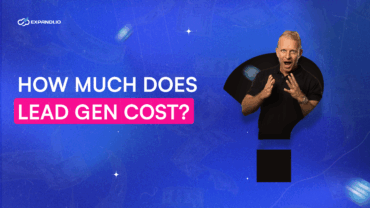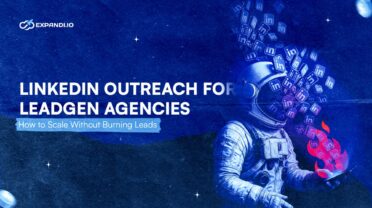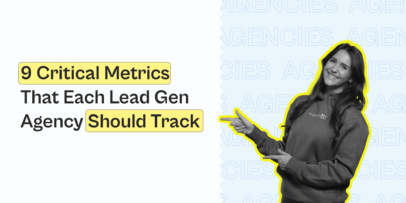10+ High-demand Niches For Lead Generation Agencies
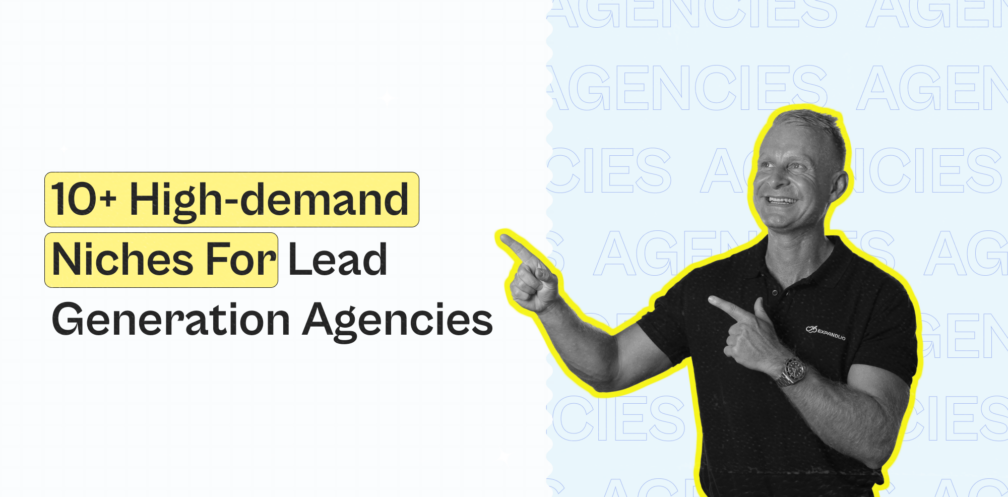
If you’re providing a lead generation service as an agency, there are certain “hacks” that can make your life indefinitely easier.
For one, the niche you work within.
Some lead gen niches naturally have more demand and better opportunities for agencies.
In terms of demand for your services, how much they value lead generation, how much clients are willing to pay, and more.
Naturally, you’ll want to work with companies that can afford your services. Not startups that aren’t profitable or newly established brick-and-mortar businesses that can’t close the leads you’re bringing in.
When choosing a niche, it’s essential to pick one where the businesses need new leads constantly and where new customers translate into significant revenue growth for the client.
Typically, good high-ticket lead generation niches means:
- High demand
- There are businesses that constantly need new leads.
- New customers translate into high increase in revenue for the business.
- You have experience in the niche and you’re confident you can deliver results.
Agency niches where companies can afford your services are ideal. Such as established firms rather than startups or brick-and-mortar businesses that may struggle to close the leads you generate.
We’ll list out ideal agency niches for lead generation below in detail, among other topics.
Here’s what you’ll learn:
- What are high-demand lead generation niches? Service overview
- What to consider when picking a niche for your lead generation agency
- 12 Best, high-demand niches for lead generation agencies
- 6 Steps to find the right niche and where to begin

But one more thing before we begin.
If you provide lead generation services, chances are, you spend a lot of time on LinkedIn.
If that’s the case, we highly recommend joining our group The LinkedIn Outreach Family. In it, we cover the latest outreach growth hacks, proven strategies, templates, and more. Regardless of your niche, you’ll be able to find a lot of value there and answers to your questions!
What Are High-demand Lead Generation Agency Niches?
When providing lead generation services, some niches will have more demand for them than others.
Lead generation niches can be defined as markets where businesses focus on providing tailored solutions for specific customer needs.
Meanwhile, high ticket lead generation niches often provide the most opportunity, especially in industries like technology, healthcare, and finance. These industries have a high customer lifetime value, and businesses are willing to invest heavily in quality leads because the returns can be substantial.
Agencies often target these niches to boost sales and improve marketing return on investment for their clients.
According to HubSpot, 61% of marketers struggle with lead generation and growing their organic traffic.
So, companies involved in buying, selling, or generating leads for their clients can be highly profitable.
Most agencies that do ongoing lead generation work for clients typically have retainer contracts that last anywhere from few months to few years.
Here’s how a retainer pricing model works:
- You determine the cost of one month’s of work for a client and add in the profit margin.
- You enter into an agreement with the client.
- You complete one month’s worth of work for the client.
- They pay your monthly fee (either in advance or at the end of the month).
Typically, the average “per month” cost for lead generation is between $3,000 and $20,000.
High ticket B2B niches, in particular, can be extremely lucrative for lead generation agencies because they involve large transactions or ongoing services. These companies are willing to pay higher retainers for steady and reliable lead flow, making this an ideal focus for agencies looking to grow.
See our full guide on how much to charge for your lead generation services for more info on pricing.
Below, we’ll also cover cost per lead across multiple industries and how you can use this information to price your services accordingly.
What To Consider When Picking A Niche As A Lead Generation Agency
According to DeTorres Group, there’s a lot of variability when it comes to lead generation pricing by channel.
But on average, the lead generation cost by B2B channel is as follows:
- Search Engine Optimization: $30 – $175
- Pay Per Click: $40 – $150
- Content Creation: $80 – $300
- Display Advertising: $65 – $85
- Webinars: $50 – $110
- Video Marketing: $175 – $225
- Public Relations: $300 – $400
- LinkedIn: $75 – $125
Meanwhile, the cost per lead breakdown per industry is:
- IT and services – $370
- Healthcare and medical – $286
- Financial services – $272
- Industrial and manufacturing – $235
- Media and publishing – $191
- Consumer products – $182
- Marketing agencies – $173
- Education – $66
- Non-profit – $43
Additionally, choosing local business niches can provide a great opportunity for agencies that are looking to focus on geographical areas.
By providing tailored solutions like local SEO, you can help smaller businesses rank higher on search engines and increase foot traffic, making them ideal candidates for your services.
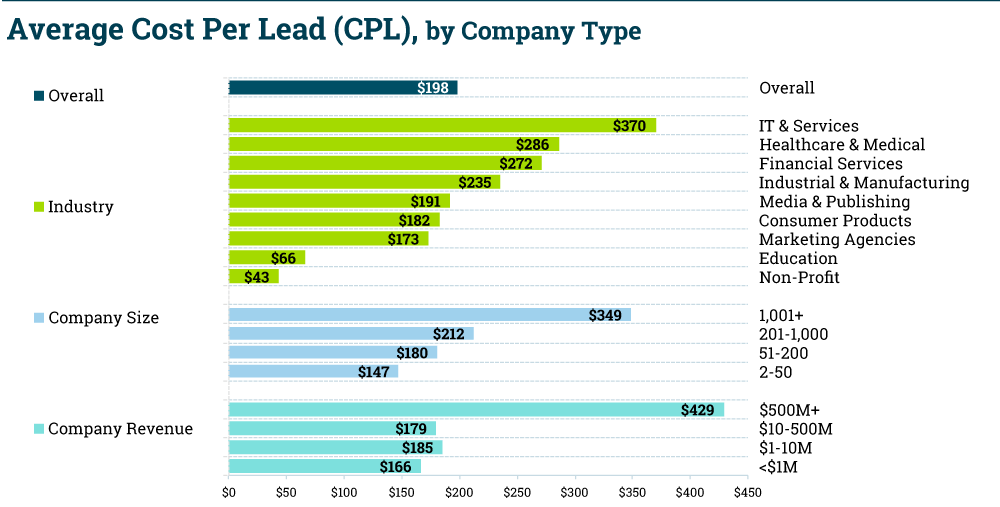
While it might seem tempting to dive headfirst into a niche you’re passionate about, there are a number of factors you need to look at first.
First things first, some of the most attractive lead generation niches have a few characteristics in common, which are as follows:
- High demand for leads and lots of potential end consumers that generate high search traffic (especially through organic search engines such as Google).
- A lot of big-budget lead buyers, or at least a consolidated bunch of them (direct vendors, service providers, or intermediaries willing to spend top dollar for qualified leads).
- High conversion rates or high-cost offers (E.g. big-ticket items, specialized niche services, etc.).
All of this indicates that:
- There is a high need for lead generation in said niche.
- And as a result, companies are willing to pay and can afford high retainers, as long as you can get them quality leads.
Then, there are some other important questions to consider when assessing a specific niche:
- What are the margins like for the underlying product or service? Will there be enough money left to compensate lead generation specialists? (i.e. your employees or service providers)
- How cost-sensitive is the end customer? Are they willing to pay for your services and can they afford it?
- Is the end customer payment guaranteed for the products or services? Is the payment subsidized or facilitated by a third-party funding source?
- Are leads important to said business? In other words, if they pay you $5,000 for a steady influx of leads, are they making enough money from those leads to justify paying your rates?
Additionally, vertical markets are always ebbing and flowing, so, timing is important when considering a niche.
Certain agency niches are also seasonal. Meaning, they attract customers only for a short period of time. For example, tourism and travel, retail, event planning, and so on.
You should make sure there is a strong and reliable base of ideal customers (i.e. niche is big enough) available to satisfy your lead generation business and growing demand.
For example, providing lead generation services for marketing SaaS tools makes sense. But agencies that work with pet food eCommerce brands exclusively are probably too niche.
Now, let’s take a look at some of the biggest, high ticket lead generation niches you can go after as an agency.
12 High Ticket Lead Generation Niches For Agencies
Another thing to look at when deciding on a high-demand niche is the average customer lifetime value (LTV).
The LTV is calculated by multiplying the value of the customer by the average customer lifespan.
For example, if the average sales in an eCommerce store are $80, and on average, a customer shops four times every two years, the LTV is $80 x 4 x 2 = $640.
Now, the reason this matters is that if a customer’s LTV is high, that means the company places high importance on lead generation.
As such, high ticket B2B niches that have a high average customer lifetime value are as follows:
- HVAC (Heating, ventilation, and air conditioning) – $15,340
- Business Operations Consulting Firm – $136,959
- Digital designing firms – $21,864
- Financial advisory firms – $45,976
- Commercial insurance companies – $125,190
- Medical billing firms – $26,932
- Software development firms – $69,915
- Architecture firms – $135,480
- Healthcare consulting firms – $96,937
That said, you shouldn’t be looking at the LTV indicator in a nutshell, as many other factors affect lead generation. Such as the company solution, churn rate, and so on.
In general, some of the best niches you can specialize in as a lead generation agency include:
- Technology.
- Healthcare.
- Real estate.
- Finance.
- eCommerce.
- SaaS.
- Marketing.
- Consulting firms.
- Legal.
- Education institutions.
- Plastic surgeons.
- Insurance
Let’s take a look at why these are some of the best lead gen niches you can go after.
Technology
Technology is a constantly growing niche for lead generation agencies.
Since the niche is known for its high spending on marketing and sales, this means there’s a strong demand for lead generation as well.
According to MarketingDive, technology companies are among the top spenders on B2B marketing. It’s not uncommon for technology and software companies to spend up to 25%-50% of their marketing budget on digital marketing.
Additionally, the technology industry is highly competitive and companies are always looking for ways to acquire customers and stay ahead of their competition. This creates a high demand for lead generation services.
Healthcare
As mentioned above, the average customer lifetime value for healthcare firms is around $96,937.
Like technology, healthcare is a great lead generation niche as it’s constantly growing and always in demand.
According to research, SEO leads have a 14.6% close rate in converting patients, while outbound leads have a much lower 1.7% rate. And local convenience is key as “near me” searches for health-related services have doubled since 2015.
So, lead generation agencies in this niche might want to focus on SEO as a lead generation service, content marketing, and local SEO.
One important thing to keep in mind in this niche is that it’s heavily regulated. So, lead generation agencies should be aware of and comply with relevant laws such as HIPAA in the US.
Real estate
With the advance of technology, real estate is also becoming increasingly popular as a lead generation niche.
Almost everyone is using the internet to search for and purchase homes online nowadays.
According to FitSmallBusiness:
- 97% of buyers used the internet to search for a home in 2021.
- And websites are the most popular marketing channel, with organic and paid searches driving 57% of website visitors.
For agencies, this is a big opportunity, as you can focus on SEO as well as paid ads for your clients.
Buyers nowadays are doing more research into the king of properties they want to purchase. This has converted real estate into a more lucrative option for marketers.
Finance
Finance in itself can be split across multiple sub-niches. Such as financial advisory firms, financial planning as a service, investments, and so on.
But either way, all of these niches are large and complex industries with a high demand for relevant products and services.
According to LSA, percent of consumers that ran an online search before converting within the finance niche are as follows:
- Loans and mortgages – 90%
- Check cashing – 85%
- Tax return prep – 76%
- Accounting – 72%
- Banking – 61%
Then, the average amount spent after a search is as follows:
- Loans and mortgages – $28,435
- Check cashing – $169
- Tax return prep – $182
- Accounting – $683
- Banking – $3,432
Financial service leads are expensive to drive, at an average cost of $160.
So, if you decide to go after this niche as an agency, it’s critical you provide a smooth experience to convert leads into customers.
eCommerce
eCommerce can be an interesting lead generation niche as it largely depends on:
- What you’re selling.
- How (online, in person).
- Product price and solution.
Some products are going to be almost always in demand and consumers will buy them month over month as soon as they run out (e.g. coffee products, toothpaste, clothing, etc.).
Meanwhile, some products are completely seasonal (e.g. Christmas trees) or an investment (e.g. fancy watches).
With the shift towards online shopping and the increase use of mobile devices for commerce, the overall demand for eCommerce services will rise. Though, depending on the product, sometimes brands might prefer to run ads instead. Depending on the buying decision behavior.
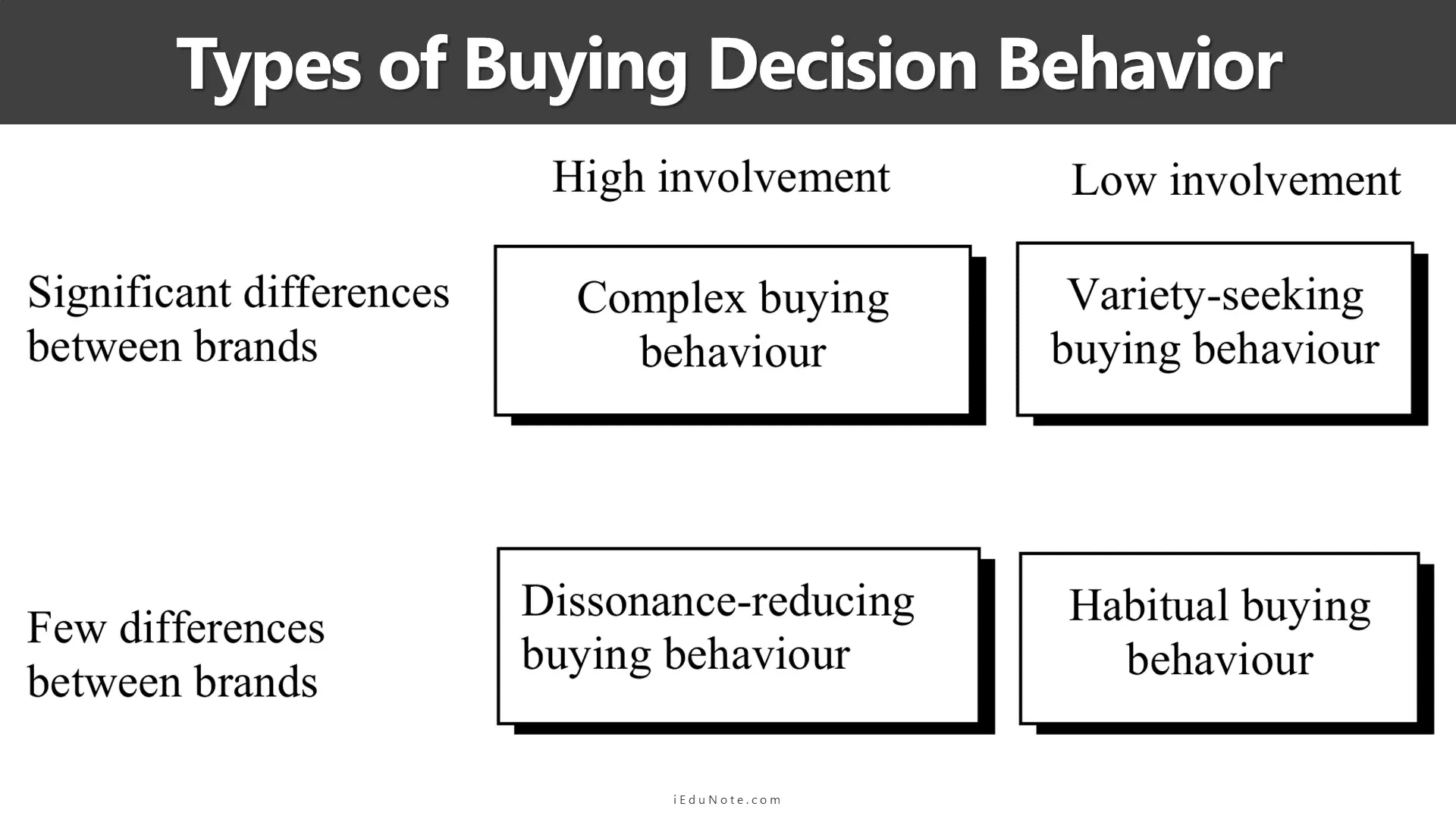
If a company is selling a product that requires high involvement and self-education, their leads might be worth much more as a result. Since customers will want to educate themselves, read more on the topic, and discover potential brands before making an important purchase.
If it’s a low-involvement product, however, customers might simply go by convenience and leads might not be worth a lot.
There are also subscription-based products (i.e. products people buy monthly, such as coffee, pet food, and so on). If you get leads for such a company, they might turn into customers that stick around and subscribe for months if not up to a year. In that case, lead generation services would also be lucrative.
SaaS
This is an important step.
SaaS (or software as a service) is a very competitive and in-demand niche for lead generation.
Lead generation agencies in this niche need to be aware of the latest trends and have a deep understanding of the target market in order to be successful. Additionally, agencies need to be aware of the specific sub-niches within the industry and the target audience’s pain points.
Another reason SaaS lead generation is a big one is because of the many tools available to help with this process.
Expandi for example, is a SaaS tool many agencies use to automate LinkedIn and email outreach in one central location. So, instead of writing out each connection request, follow-up, or email one by one, users can set up smart sequences to put their lead generation on autopilot.
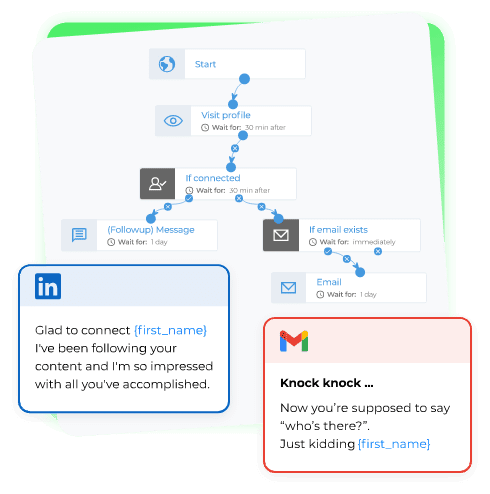
While this makes lead generation fundamentally easier, the niche is still very competitive and requires you to be up to date with the latest SEO and content creation, outreach, and other best practices.
According to BloggingWizard:
- Email marketing is the most common lead-generation channel.
- LinkedIn is the most useful social platform for B2B companies.
- And using marketing automation software can increase qualified leads by as much as 451%.
Additionally, leads are also worth a lot in this niche as SaaS tools by nature are subscription-based. For example, Expandi costs $99/set per month with a free 7-day trial. And most tools also sweeten the deal by offering discounts if users pay months in advance, making this a great niche for lead generation agencies.
Marketing
Doing lead generation for marketing companies or teams might not make a lot of sense at first.
Since they should be able to do marketing for their own brand. But that’s not always the case as it largely depends on the type of marketing the company focuses on.
For example, if they provide marketing campaigns for a specific type of product or service, they could always use a steady influx of potential new customers.
Alternatively, you could also provide lead-generation services for other marketing agencies. It largely depends on the agency and what kind of service they provide, but on average, marketing agencies charge anywhere from $1,500-$6,000+.
So, if you provide lead generation services at $3,000/mo and get a marketing firm new clients that pay them $5,000/mo, you can very easily justify your rates.
Consulting firms
While it largely depends on the specific consulting firm, as mentioned above, the average lifetime value for business operations consulting firm clients is around $136,959.
Consulting firms typically have a wide range of clients across different industries, which can provide many opportunities for agencies to focus on different channels.
One downside of this niche might be the fact that it’s also highly competitive and many consulting firms are often well-established with a strong network of clients and leads.
Additionally, many consulting firms also rely on word-of-mouth referrals and networking to generate leads. So, they might also be interested in general marketing services to strengthen their brands.
Legal
The legal industry encompasses a wide variety of sub-niches, such as traffic, family law, criminal, and many more.
This presents an opportunity for agencies to focus on specific niches. For example, you could brand yourself as a lead generation agency for immigration or corporate law.
Legal services are almost always needed, so, chances are, your services will always have demand as well. Though, like many other niches, legal is often very competitive and heavily regulated.
Education
In terms of lead generation, educational institutes need to be able to effectively communicate the value of their programs.
The right agency should be able to help them reach their target audience with the right lead-generation campaigns and channels. The channels will depend largely on the institute though.
Many institutes focus on conferences, local ads, content, and more. Less so on personal outreach to potential students.
Plastic surgeons
Surgery marketing is all about finding qualified leads and presenting them with the right offer.
Depending on the medical operation, leads can generate a lot of income for the doctor. So, they might be open to paying high rates for lead generation as well.
One of the best ways to generate leads in this niche is to focus on email campaigns, local market, content, and retargeting audiences with information about specific procedures.
Since leads will need to consume a lot of content and educate themselves before converting, it also makes sense to work closely with the surgeon since they can provide a lot of expertise in what customers seek after.
Insurance
Last but not least, insurance is one of the biggest lead-generation niches out there.
Insurance products are generally expensive and commoditized. This means customers can distinguish between products based on price, attributes, and need. It’s important to keep in mind that many insurance products are similar to what other competing companies also sell.
So, as a lead generation agency, you’ll want to focus on generating leads, qualifying them, and helping insurance firms position their services the right way to stand out.
6 Steps To Find The Right Niche As A Lead Generation Agency
Now that we’ve covered some of the best, high-demand niches for agencies, you might still be wondering what steps you should take once you’ve focused on a niche.
In that case, you should consider the following steps to niche down as an agency:
1. Evaluate your skills and expertise
Before you decide on a niche, you should analyze your agency’s strengths and weaknesses in terms of what services you can provide.
Focus on lead gen niches where you have a proven track record.
For example, if your team excels at LinkedIn outreach, choose a niche that benefits from that platform, like SaaS or consulting firms. Avoid niches where your core competencies don’t align with the lead generation channels used.
Then, play to your strengths and make sure you’re providing services you know how to execute.
2. Study the market
Investigate high ticket lead generation niches to identify sectors with the most potential.
Look for industries with a high customer lifetime value (LTV) and significant budgets for lead generation services, such as technology, finance, or healthcare.
From there, you should conduct extensive market research within a potential sub-niche.
Look at:
- Trends.
- Patterns.
- Competition.
- And what kind of services other agencies are providing.
Once you have an idea of the market size and key players, you should consider how you can position yourself accordingly.
3. Focus on a specific sub-niche
Instead of targeting a broad industry, focus on a more specialized area within that industry.
It’s much better to brand yourself as a niche lead generation agency than a general all-in-one company.
This makes it much easier to define your target audience, and in turn, for them to identify who your services are for.
Then, you can tailor your lead generation services to a specific group.
High ticket B2B niches like commercial insurance or software development often offer more focused opportunities where lead quality matters more than quantity.
4. Consider how to scale
When choosing your niche, ensure it’s large enough to support your growth.
If you want to grow as an agency, this step is essential.
If your niche is too small, it’s going to be harder to scale. So, if you want to scale, you should look into:
- If your business model can support growth as your business expands.
- How you can hire and train new employees while still being profitable.
- How you can optimize your operations as you scale with more people and clients.
Industries like real estate or consulting firms often provide room to scale, given their broad customer bases and continuous demand for leads.
5. Test the waters
Before fully committing to a niche, run test campaigns. Offer your services to one or two clients in the niche to gather data and understand the specific challenges of generating leads in that market.
There are a few ways to do this, including:
- Helping a new client for free in exchange for a case study to prove your services work.
- Providing services free of charge for 30 days to see what works and what doesn’t.
- Analyzing other lead generation agencies to see what kind of services they provide and what results they’re generating.
You might also offer limited-time discounts to local business niches to see if there’s enough demand and willingness to pay for your services.
6. Create a strong value proposition
Your company’s value proposition clearly articulates why someone would want to buy from your company instead of your competitor.
For example, if you specialize in local business niches, emphasize your expertise in local SEO or targeted ad campaigns that boost visibility within specific geographic areas.
For high ticket lead generation niches, highlight your ability to deliver premium, high-quality leads that generate substantial ROI for clients.
Typically, the steps for creating a value proposition are as follows:
- Get to know your customers and do a deep dive on your competitors.
- Define and create your ideal customer profile and buyer persona.
- Define the problem you’re solving.
- Define your unique method of solving the problem.
- Create your hypothesis.
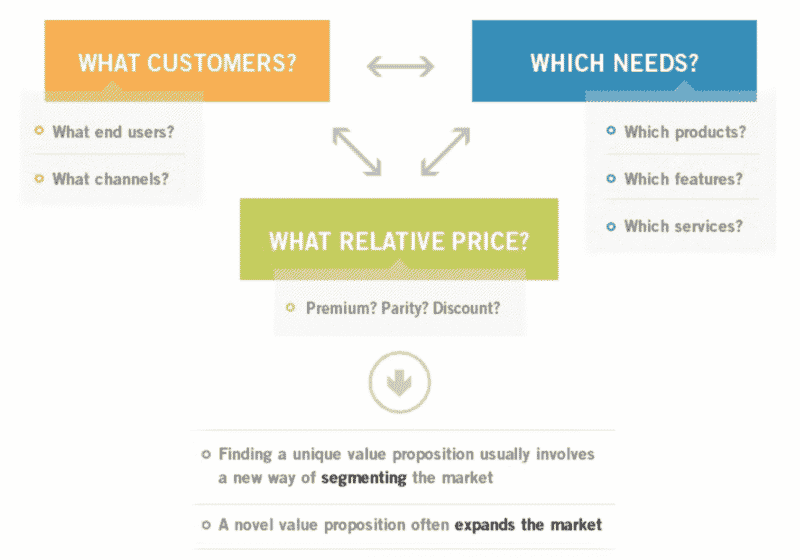
For a detailed breakdown of each step on crafting your value proposal, see our full guide on LinkedIn sales messages.
Conclusion
That’s a wrap!
Whether you’re just starting out or refining your focus, this guide should help you better understand how to choose high-demand lead generation niches.
By focusing on industries with strong growth potential, you can ensure that your agency not only finds clients but also retains them with high-quality results.
If you’re targeting high ticket lead generation niches, for example, your ability to generate premium leads will directly impact your clients’ success.
If you’re planning on providing B2B lead generation services, it’s guaranteed you’ll be able to find leads on LinkedIn.
In that case, you can get started with a free, 7-day Expandi trial to automate your LinkedIn lead generation actions and not have to write each message one by one.
Or, if you simply need more info on the latest LinkedIn best practices or proven outreach templates, be sure to join our private group The LinkedIn Outreach Family!
You’ve made it all the way down here, take the final step
